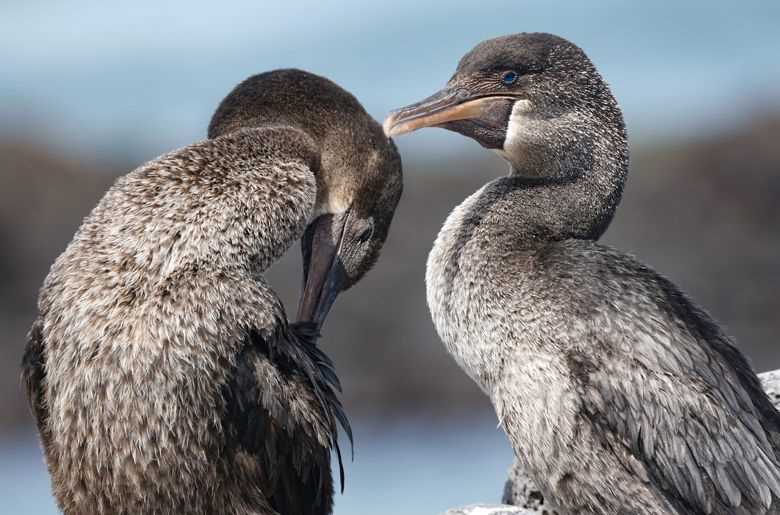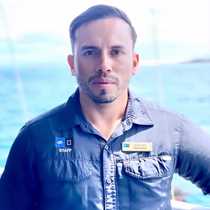National Geographic Endeavour II dropped anchor off the coast of Fernandina Island, the youngest of the Galapagos Islands. After a dry landing on Punta Espinoza, we walked further into black lava fields, covered with hundreds of marine iguanas basking under the sun. We also spotted a few of the Galapagos flightless cormorants nesting on the dry coastline, and a couple of Galapagos penguins were seen swimming along the shore.
Some of the tide pools had some sea lion pups, waiting for the mothers to come back from their fishing outings. A beach master male sea lion was patrolling his territory making sure no other males invade his area of protection. Fernandina is covered with young lava fields, a site where primary succession is taking place and some of the pioneer species can be seen.
After the hike, we had the opportunity to go deep water snorkeling along the coast of Fernandina. The water was full of plankton and lots of food for species such as Pacific green sea turtles, Galapagos penguins and the endemic marine iguanas. One of the most incredible sightings of the snorkeling activity was to see the marine iguanas feeding underwater—an event which happens nowhere else in the world, only in the Galapagos.
After lunch, our ship repositioned to a visitor’s site known as Punta Vicente Roca, on Isabela Island, the largest island of them all. We went on a spectacular Zodiac ride along the coast of Isabela. We encountered a large colony of Galapagos fur seals resting on the rocky cliffs, a couple of Galapagos penguins, blue-footed boobies, brown pelicans and a large number of Pacific green sea turtles resting and feeding within the waters of this protected cove.
After the Zodiac ride, we crossed the equator line and had a celebration at the sundeck on National Geographic Endeavour ll. We finished our day with an amazing sunset and a glass of champagne on hand, celebrating crossing hemispheres and another fantastic expedition day in the Galapagos.









